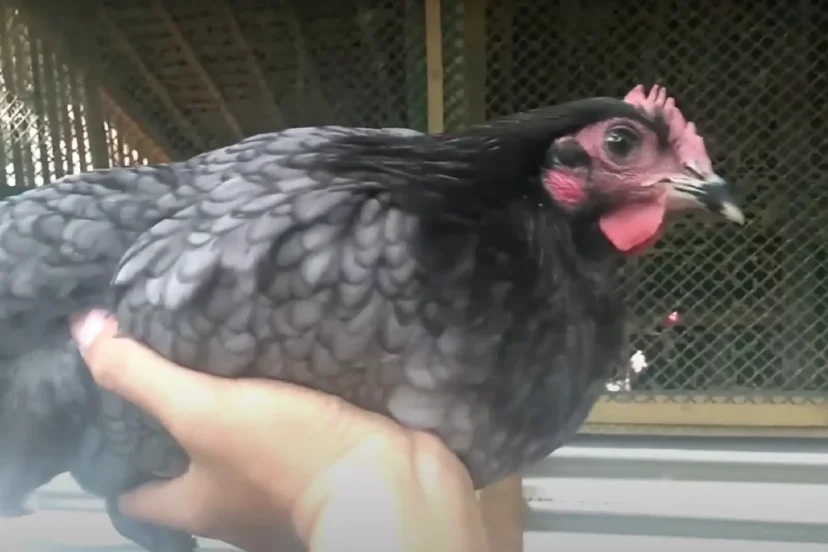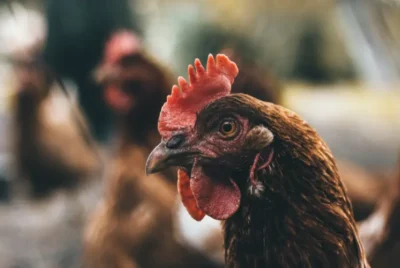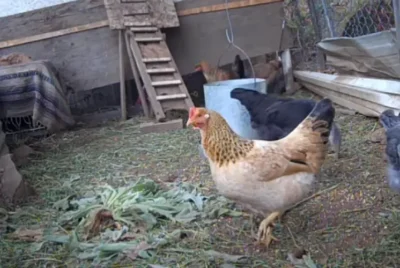Blue Australorp Chicken Breed Guide
Are you a poultry enthusiast or a small-scale farmer looking to add a captivating and productive breed to your flock? Have you ever wondered about the unique qualities of the Blue Australorp chicken and how it could be a valuable addition to your poultry endeavors?
In this comprehensive breed guide, we will discuss the Blue Australorps, from their origins to their care requirements and everything in between. Whether you’re seeking reliable egg production, a friendly and docile temperament, or a striking and unique addition to your coop, this guide has got you covered.
Read on to discover why Blue Australorps are the breed you’ve been searching for.
Quick Overview of Blue Australorp Chicken
- Origin: Australia
- Purpose: Dual
- Appearance: Blue or slate-colored feathers.
- Size: Roosters weigh around 8-9 pounds, and hens weigh about 6.5-7.5 pounds.
- Egg Color: Light brown eggs.
- Egg Production: 250 to 300 eggs per year.
- Heat Tolerance: Not hardy
- Cold Tolerance: Hardy
- Temperament: Calm and friendly nature.
- Broodiness: Less prone to broodiness
Blue Australorp Chickens Origins
The Blue Australorp chickens originally come from Australia. They are a particular blue-colored version of the Australorp chicken. Australorps were first made in Australia by mixing Black Orpington chickens with other breeds like Rhode Island Reds and Minorcas. The goal was to create a chicken that was good at laying eggs and useful for meat.
The blue color of the Blue Australorps is because of a particular gene that changes the color of their feathers. This means they are just like a regular Black Australorp but with blue feathers instead of black.
While they are not as common as the traditional black Australorps, they are a captivating and relatively rare breed sought by backyard chicken keepers for their distinctive appearance and utility.
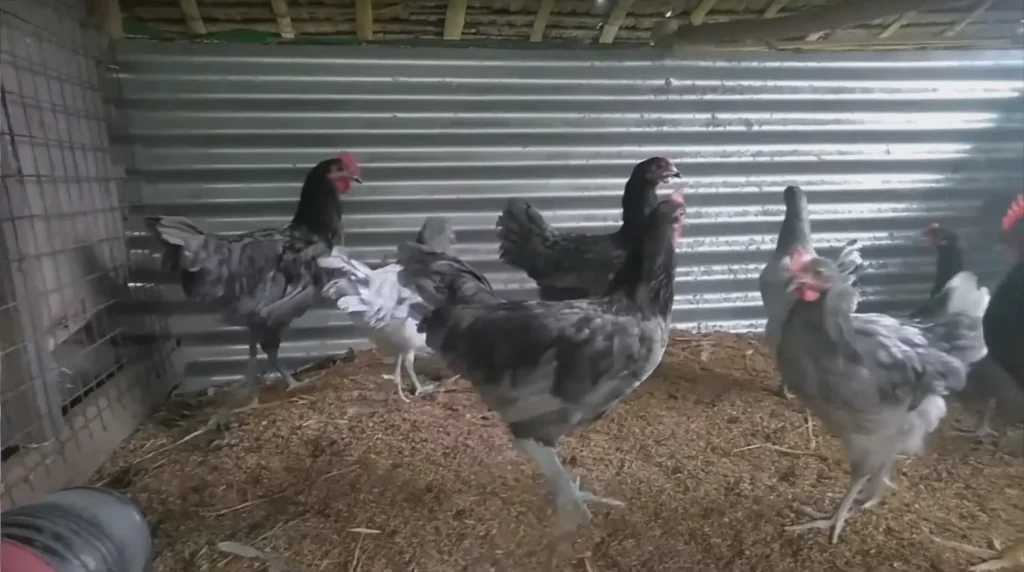
Blue Australorp Chicken Physical Appearance
Feather Colors
The most distinctive feature of the Blue Australorp is its mesmerizing feather color. These chickens exhibit a range of blue shades, from light steel blue to deeper slate blue. The intensity of this blue can vary across different individuals, giving each bird a unique look.
The blue hue is consistent throughout their body, covering the head, neck, back, wings, and tail. In certain lighting conditions, these feathers can appear slightly iridescent, adding to their allure.
Body Size and Weight
Blue Australorps are medium to large-sized chickens known for their well-rounded and sturdy build. Adult Blue Australorps roosters typically weigh around 8-9 pounds (3.6-4.1 kg), while the hens are slightly lighter, weighing approximately 6.5-7.5 pounds (2.9-3.4 kg).
Legs and Feet
The legs and feet of the Blue Australorp complement the overall color scheme of the bird. They are typically yellow or slate in color, which harmonizes beautifully with their blue plumage. The legs are medium length and set moderately apart, offering the bird good stability and a confident stance.
Combs and Wattles
The comb is single, upright, and typically red in color, which can range from deep pink to vivid red. It is medium-sized and can either be straight or slightly serrated. The wattles, which are the fleshy structures hanging beneath the beak, mirror the color of the comb and are also of medium size.
Blue Australorp Chicks
The chicks of the Blue Australorp breed are just as charming as the adults, with their own distinctive features. They are primarily blue in color, with white accents on their wing tips, chest, and abdomen. The Blue Australorp baby chicks have single combs, and their legs and feet are a clean mix of white and black.
As they mature, they gradually develop into the characteristic deep blue plumage of the adult Blue Australorps.

Blue Australorp Chicken Temperament and Personality
Blue Australorp chickens are really friendly and calm, which makes them great for people who have backyard chickens or a small farm. They are super easy to handle and get along well with people and other chickens. This makes them a good choice if you have kids because they are safe and fun to be around.
These chickens, even the Blue Australorp roosters, usually aren’t aggressive, so they help keep the peace in the chicken coop. They are also tough and can live in different kinds of weather, which is handy.
Blue Australorp Chicken Egg Color, Production, and Broodiness
Egg Color
One of the distinctive features of Blue Australorp chickens is the color of their eggs. These chickens typically lay eggs that are light brown or tinted. While the exact shade may vary slightly among individuals, it generally falls within the range of soft, pale browns.
Egg Production
On average, a single Blue Australorp hen can produce approximately 250 to 300 eggs annually. However, it’s important to note that factors such as diet, environmental conditions, and the chicken’s overall health can influence egg production.
What sets Blue Australorps apart is their reliability; they maintain steady egg production even during the colder months when some other breeds may reduce their output. This makes them valuable to any flock, providing a consistent supply of fresh, high-quality eggs.
Broodiness
While Blue Australorps are known for their exceptional egg-laying abilities, they also exhibit a unique trait related to broodiness. Blue Australorps, although excellent layers, tend to be less prone to broodiness than some other breeds.
This characteristic can be advantageous for those who prioritize egg production over hatching chicks. However, if you’re interested in raising chicks, you may need to consider alternative breeds or employ artificial incubation methods.
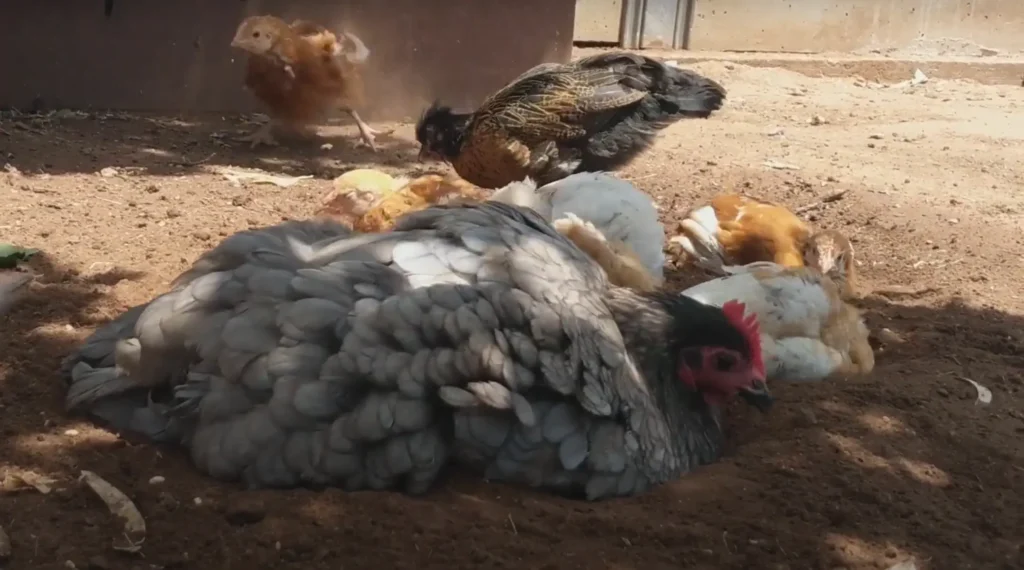
How To Take Care Blue Australorp Chickens
Chicken Coop
- Space: Blue Australorps need enough space to move around comfortably. Plan for at least 3-4 square feet per chicken inside the coop and about 8-10 square feet per chicken in an outdoor run.
- Ventilation: Ensure the coop has good ventilation to keep the air fresh and reduce moisture, but avoid direct drafts on the birds.
- Protection: The coop should be secure from predators, with sturdy construction and locks. Consider covering outdoor runs with wire mesh to protect from aerial predators.
- Cleanliness: Regular cleaning is important to maintain hygiene and prevent disease. Change bedding frequently and clean the coop thoroughly regularly.
Nesting Box
- Space: Provide one nesting box for every 3-4 Australorp hens. Each box should be about 12×12 inches.
- Location: Place the boxes in a quiet, darker part of the coop to encourage egg-laying.
- Bedding: Use clean, dry straw or wood shavings for bedding. Keep the bedding fresh to ensure hygiene and comfort.
Feeding Requirements
- Diet: Feed a balanced diet of quality chicken feed. Starter feed for chicks, grower feed for adolescents, and layer feed for adults.
- Supplements: Provide calcium supplements like oyster shells for laying hens to ensure strong eggshells.
- Grit: Supply grit to help with digestion, especially if they don’t have access to pebbles outdoors.
- Treats and Greens: Offer kitchen scraps, vegetables, and greens in moderation. Avoid toxic foods like onions, chocolate, and avocado.
- Water: Fresh, clean water should be available at all times. Check and refill water containers daily.
General Care
- Health Checks: Regularly check for signs of illness or parasites. Look for changes in behavior, appearance, or egg production.
- Handling: Gently handle your chickens regularly to maintain a calm and friendly flock.
- Predator Awareness: Be vigilant about potential predators, especially at night, and ensure the coop is secure.
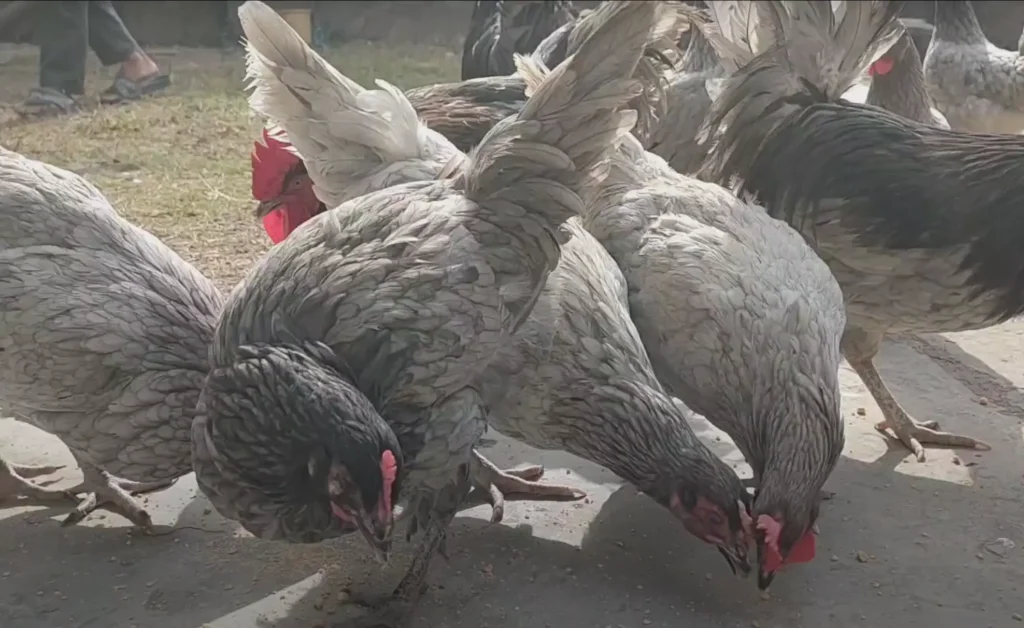
Buying Your Blue Australorp Chicken
Blue Australorp chicken is a breed that combines a striking appearance, exceptional egg-laying abilities, and a friendly personality.
Whether you’re a poultry enthusiast or a small-scale farmer, these chickens are a valuable addition to your backyard flock, providing beauty, utility, and a delightful presence in your backyard or farm.
So, why wait? Welcome these delightful chickens into your coop and experience the joys they bring to your poultry journey.
Read also: Explore the Splendor: 10 Best Blue Chicken Breeds for Your Coop

